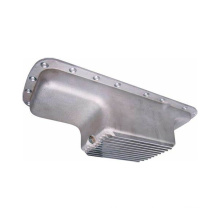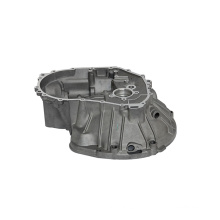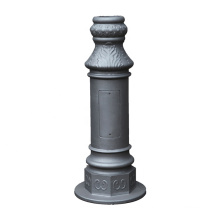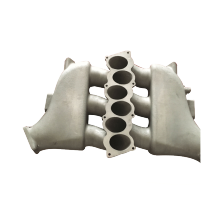Effect of aging treatment on mechanical properties of non-quenched and tempered steel fasteners
2021-05-17
The preparation of non-tempered steel fasteners eliminates quenching, tempering and other processes, reduces production energy consumption, and reduces the tendency of deformation cracking during the manufacturing process. Cold-formed non-tempered steel fasteners have been widely concerned by countries all over the world, and have been rapidly developed and applied. 2. The non-modulated steel bolt making process is: hot-rolled bar material, pickling, cold drawing, cold-drying, everything One surface treatment of one finished product.
Bolt strength test research and industrial production show that B-4, non-tempered steel bolt reinforcement mechanism mainly includes: precipitation strengthening of hot rolled material, solid solution strengthening, fine grain strengthening and cold forming deformation strengthening, and product strengthening strengthening, etc. The aging strengthening in the process of processing and preparation is an important process for strengthening the bolts of non-tempered steel, which can further improve the mechanical properties such as strength of bolt steel. The influence of aging process on the microstructure and properties of non-quenched and tempered steel bolts has been studied. 5 This paper focuses on the mechanical properties of non-quenched and tempered steel by aging treatment through hardness, tensile plasticity, impact energy test and microstructure analysis. Influence research.
1 Test materials and methods The wire with a drawing deformation rate of 28% is selected as the test material, and its chemical composition (mass fraction) is: 0.21C, 0.047Al. The aging treatment is carried out in a box type resistance furnace, and the aging process thereof The parameters are: 250Tx2h, 300Tx2h, 350Tx2h. The hardness of the sample is tested by 3R-521 Rockwell hardness machine, and the tensile plasticity of the sample is tested by CSSW300 tensile tester. The tensile sample size is as shown. According to the national standard GB/T229-1994 processing impact specimen, its size is as shown, select the drop hammer with impact energy of 75 to impact the specimen at a rate of 3.5m / s, record the impact energy KV2. Use metallographic microscope and transmission electron microscope Material organization in different states was analyzed.
The tensile properties of non-quenched and tempered steel wire with a reduction ratio of about 28% after different aging treatments can be seen from Table 2, and the plasticity (including A and Z) of the unaged treated sample is low, and the effect is effective. When the temperature is low (250C), the A and Z values are not obvious, the aging temperature is increased to 300C, the A value reaches the maximum value, which is increased by about 37.4%, the Z value is not increased obviously, and the aging temperature (350C) continues to increase. (A and Z) show a downward trend.
Therefore, for the non-quenched and tempered steel wire with a deformation reduction ratio of 28%, it has good tensile plasticity performance when it is kept at 300 C for 2 h.
The tensile specimen size is indicated. It can be seen that the average hardness of the material before aging is HRA 63.7. With the increase of aging temperature, the hardness value increases, reaching the maximum value when the aging is 300C, and the hardness is HRA65.8. After 300C, the hardness value begins to decrease again.
Table 1 Hardness values at different aging temperatures Table 2 Tensile properties of different aging treatments 2.3 The effect of aging treatment on impact toughness is a non-quenched and tempered steel wire with a deformation reduction ratio of 28% at different aging treatment temperatures The shock absorption work can be seen from the above, when the aging temperature is gradually increased, the impact absorption power is gradually increased from 23 to 25, which is about 8.7%. However, after 300C, the aging is effective, and the best aging process is generally at 300C. 2h. 3 Results Discussion and Analysis Through the analysis of the metallographic structure of the material after aging treatment, it is found that the aging process does not change the ultrafine grain structure of the material, which is equiaxed ferrite + fine cluster, shattered pearlite structure, Better strength. At the same time, Nb dissolved in austenite improves the stability of supercooled austenite. 6. Lowers the pearlite transformation temperature and forms fine, shredded pearlite. The grain size is ultra-fine to reach 12 grades. The grain refinement, see, can play a better strengthening effect, the hardness is improved, and the plastic toughness is improved. In addition, when the aging temperature is 300 C, the structure is uniform. During the aging process, there are carbon, nitrogen and other elements in the ferrite grains. The carbon and nitrogen atoms can diffuse to the dislocations to form Kodak air mass at a shorter distance, and pinning Dislocations are also the cause of the increase in hardness10, as shown by the change in dislocation configuration before and after aging.
The effect of aging treatment on the tensile ductility and impact toughness of non-quenched and tempered steel wire is mainly attributed to the microstructure change caused by aging treatment. Before the aging treatment, a large number of dislocations are formed inside the ferrite due to the deformation of the cold drawing process. And the dislocation entanglement forms a cellular substructure, where the dislocation density is high and the intracellular dislocation density is very low. After the aging treatment, a structural structure or a substructure having a stable state or a metastable state is formed in the ferrite, thereby increasing the toughness index of the bolt. On the other hand, the edge dislocation at the aging temperature can obtain enough energy to make the migration, so that the irregular dislocations on the slip surface are redistributed and arranged into walls to form sub-crystals, and the sub-crystals can also form through the interaction of dislocations. In order to increase the total area of the subgrain boundary, the crack propagation resistance increases, the crack initiation is delayed, and the fracture stress is increased, so that the material plasticity and toughness are greatly improved.
4 Conclusion For the non-quenched and tempered steel fastener wire with cold deformation reduction rate of about 28%, under the optimal aging process of 300 °C×2h, the substructure with smaller size or metastable state is formed, and the hardness is obtained. Increased, the tensile plasticity and impact toughness have the highest value, respectively increased by about 37.
Quenched and tempered steel bar is produced by quenching and tempering which is one kind of heat treatment to get high mechanical properties and hardness. Our advantages and more services of quenched and tempered steel bar includes:
1) Wide range of diameters from 10mm to 100mm
2) Customized Length from 100mm to 12000mm
3) Good surface roughness: 0.4um to 1.5um
4) Good straightness: 0.5mm/m to 2mm/m
5) Good roundness: 80% of diameter tolerance
6) Diameter tolerance: -0.02mm to -0.06mm/h9, h10, h11
7) Matched further processing: Grinding, polishing, straightening
8) Anti-rusty package
9) Full sets of testing equipment: Surface, Dimenstion. Mechanical properties testing
10) Fast delivery time
quenched and tempered steel, quenched and tempered steel bar, 42CrMo4 qt steel bar, qt steel bar, 4140 Q&T steel bar
Longquan Hongda Copper And Aluminum Casting Co., Ltd. http://www.js-luggagecarts.com









